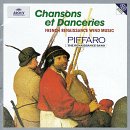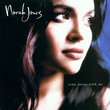| All Artists: Josquin Desprez, Nicolas Gombert, Claudin de Sermisy, Claude Gervaise, Thomas Crecquillon, Jacques Buus, Philip van Wilder, Etienne du Tertre, Adrian Willaert, Piffaro Title: Chansons et Danceries (French Renaissance Wind Music) Members Wishing: 0 Total Copies: 0 Label: Archiv Produktion Release Date: 10/15/1996 Genres: Dance & Electronic, Special Interest, Pop, Classical Styles: Vocal Pop, Opera & Classical Vocal, Chamber Music, Historical Periods, Renaissance (c.1450-1600) Number of Discs: 1 SwapaCD Credits: 1 UPC: 028944710724 |
Search - Josquin Desprez, Nicolas Gombert, Claudin de Sermisy :: Chansons et Danceries (French Renaissance Wind Music)
 | Josquin Desprez, Nicolas Gombert, Claudin de Sermisy Chansons et Danceries (French Renaissance Wind Music) Genres: Dance & Electronic, Special Interest, Pop, Classical
No Description Available. Genre: Classical Music Media Format: Compact Disk Rating: Release Date: 15-OCT-1996 |
Larger Image |
CD DetailsSynopsis
Product Description No Description Available. Genre: Classical Music Media Format: Compact Disk Rating: Release Date: 15-OCT-1996 Similarly Requested CDs
|
CD ReviewsHauntingly beautiful. 11/30/1998 (5 out of 5 stars) "We purchased this CD somewhat on a whim, based on an unsatisfied fondness for medieval sackbut music. This recording, however, provides much, much more and has rapidly become one of our favorites. Its haunting beauty is both relaxing and inspiring. We highly recommend it." Room for Nuances Leslie Richford | Selsingen, Lower Saxony | 02/29/2008 (5 out of 5 stars) ""Chansons et Danseries": French Renaissance Wind Music. Performed by Piffaro - the Renaissance Band, dir. Joan Kimball und Robert Wiemken. Recorded in St. Osdag's Church in Mandelsloh near Hanover, Germany, in June and July 1994. Published in 1996 as Deutsche Grammophon Archiv 447 107-2. Total playing time: 62'44".
Although there is evidence of the existence of a shawm consort in 16th century France, there is only a very limited amount of music from France that was specifically written for such an ensemble. The Philadelphia Renaissance Wind Band (to use Piffaro's former name) has extricated itself from this quandary, however, by making its own arrangements (from Arbeau's "Orchésographie", for example) and by making use of pieces which, on a strict evaluation, should probably be considered Dutch (composers with names such as Buus, Willaert oder Van Wilder were from areas we today associate with Belgium). And together with the shawm and sackbut ensembles or the lute and bagpipes that one has come to associate with Piffaro, some exquisite recorder consorts have slipped into the program, reminding one in places of the musical paths trodden first by Clas Pehrsson's Musica Dolce ensemble or even by the Amsterdam Loeki Stardust Quartet. There is even a contrabass recorder to be heard! What I personally like about this program ist that it is more comprehensive than "Canzoni e Danze" (which was recorded at the same sessions) and that the large number of "serious" pieces which are not just dance numbers leaves room for nuances, allowing the seven musicians of Piffaro to demonstrate their qualities not merely as rhythmically stomping "forte" virtuosi, but also as sensitive experts for the "piano" side of the coin. Of course, anyone looking merely for the wildness of bagpipes or the brassy loudness of "sackbuts" (trombones) could be disappointed because these aspects, although present, are embedded in an artistically and musically balanced whole. As a footnote, I should like to add that Deutsche Grammophon's booklet for this second of their series of Piffaro CDs shows some improvements over the one issued with "Canzone e Danzi". The musicians are individually named, and abbreviations enable one to know who is playing which instrument when. Unfortunately, Deutsche Grammophon could still not bring itself to offer an introduction to the instruments which, today, have largely been forgotten. If you want to know more about them, you will have to use a musical encyclopedia or take a look at the magnificently produced booklets of the CDs by the group called Joculatores Upsalienses (there are three of them on the BIS label), where the whole gamut of late medieval instruments is lovingly described with words and contemporary illustrations." |

 Track Listings (18) - Disc #1
Track Listings (18) - Disc #1![Across The Universe [Deluxe Edition]](https://nationalbookswap.com/cd//m/51/1251/1241251.jpg)




![Romantic Guitar Classics [Box Set] [Collector's Tin]](https://nationalbookswap.com/cd//m/67/6867/6146867.jpg)



